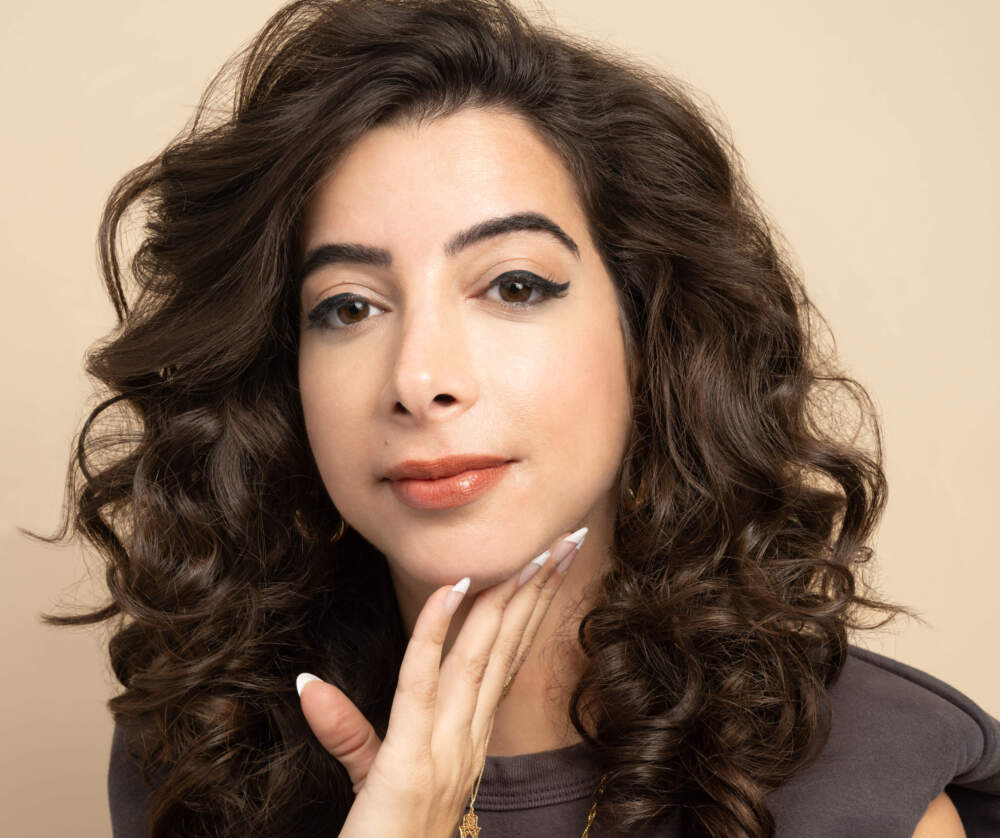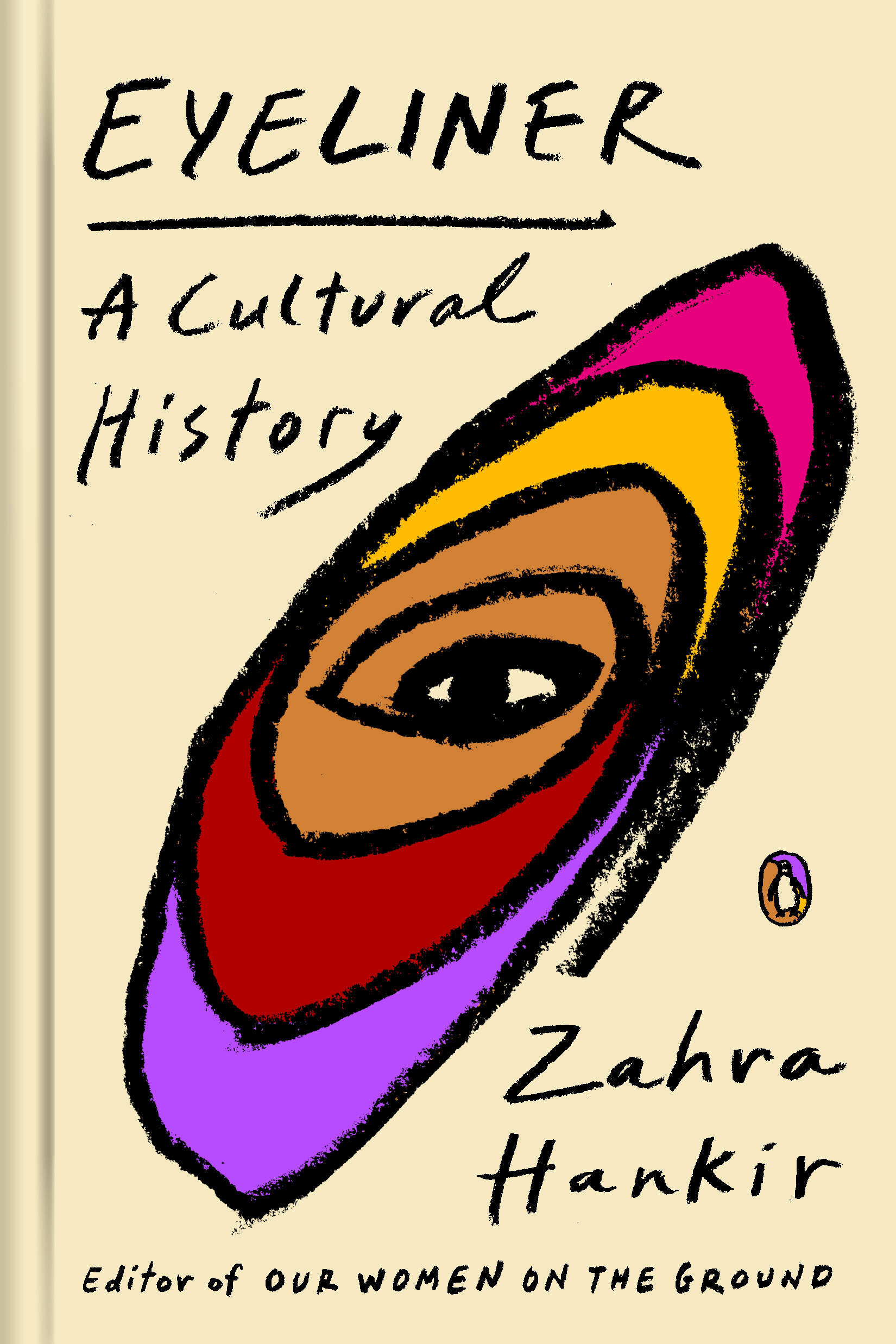Advertisement
‘Eyeliner: A Cultural History' traces the historical significance of the iconic cosmetic
Resume
Even as beauty trends change, eyeliner endures.
Eyeliner originated in ancient Egypt, and it’s been used for thousands of years across cultures. In Chad, young men from nomadic clans wear kohl eyeliner to attract wives.

Indian Kathakali dancers wear kajal to tell stories through their eyes. In Iran, women use eyeliner as a symbol of resistance. A British Instagram influencer described eyeliner as the one product you can use to totally manipulate your look.
Zahra Hankir breaks down the historical significance of the beauty product in her new book, "Eyeliner: A Cultural History.” Hankir grew up watching her mother meticulously apply her eyeliner, knowing one day she would do the same. As a teen and young adult, she remembers crowding around a bathroom mirror with a group of friends, all applying their own eyeliner and swapping tips and tricks.
Regardless of the meaning behind the makeup, Hankir says that eyeliner always holds some sort of significance to the wearer.
“The eyes are the windows to the soul,” she says, “and when you're meeting someone and looking in their eyes for the first time, if their eyes are lined with pigment, they're almost definitely trying to convey some sort of a message to you.”
5 questions with Zahra Hankir
The Ancient Egyptian Queen Nefertiti was known for wearing eyeliner. What was the impact of that?
“We know of Queen Nefertiti through her bust. Her bust was discovered just over a hundred years ago. And it was displayed in a museum in Germany after it was taken out of Egypt.
“There was something quite striking about the symmetry of the face, but really, it's the eyes that stand out the most. And they are actually quite heavily lined with kohl. And then they have these flicks, these trademark flicks that have been worn actually for centuries.
“Once her bust was displayed, Western women clamored to emulate her look by using eyeliner as one of their tools.”
A mass uprising in Iran began after the 2022 death of Mahsa Amini in the custody of Iran’s Morality Police. How has eyeliner played into the resistance?
“In 1979, cosmetics were actually officially banned in Iran, and of course, the hijab was imposed upon women. Their bodies have been policed since then, and therefore the face takes on outsize importance because women don't have as much as women in the rest of the world to experiment with when it comes to self-expression.
“In the aftermath of the revolution and beyond that, women have been quite resourceful and creative with how they wear makeup, and eyeliner is one of the tools that they use to do this. And actually, Iran is one of the biggest consumers of cosmetics in the Middle East and even beyond the Middle East, which is quite interesting.”
Eyeliner is a large part of Chola and Chicana culture in the U.S. as a way to celebrate their identity. Tell us about that.
“The use of eyeliner in this community has historically also been political because the Chola community or the Mexican American community has used their aesthetic to really say, ‘This is who we are. We are not going to assimilate into your culture. We are proud of our aesthetic and our identity and we're not going to change that,’ even though they existed against the backdrop that was quite racist towards them.
“Their aesthetics were quite central to their political resistance.”
How has kajal eye makeup been used for centuries by Indian women?
“Similar to how it's used in the Arab world and in Persia, the idea of kajal is quite central to the culture in the sense that it's very present in literature and poetry and music and in dance and also, of course, in Bollywood.
“Babies are actually given kohl, or kohl is applied, or kajal is applied to their eyes when they're born to help repel against the evil spirit and the evil eye.
“There is this sense that it goes far beyond beauty. It isn't just beauty.”
Eyeliner is pretty central to Amy Winehouse’s iconic look. What did it mean to her?
“Amy Winehouse has such a distinct aesthetic that really no other celebrity has managed to create in the sense that her eyeliner and her beehive are really etched into our collective cultural memory.
“I feel like a lot of the time, her aesthetic actually reflected her emotions or the various points in her career as her fame increased.
“At one point, the size of her wings also increased to the extent that they reached her temples. So in many ways, the absence of her liner actually spoke more than the presence of her eyeliner. That's how important it was to her aesthetic.”
Kalyani Saxena produced and edited this interview for broadcast with Todd Mundt. Grace Griffin adapted it for the web.
This segment aired on November 29, 2023.

